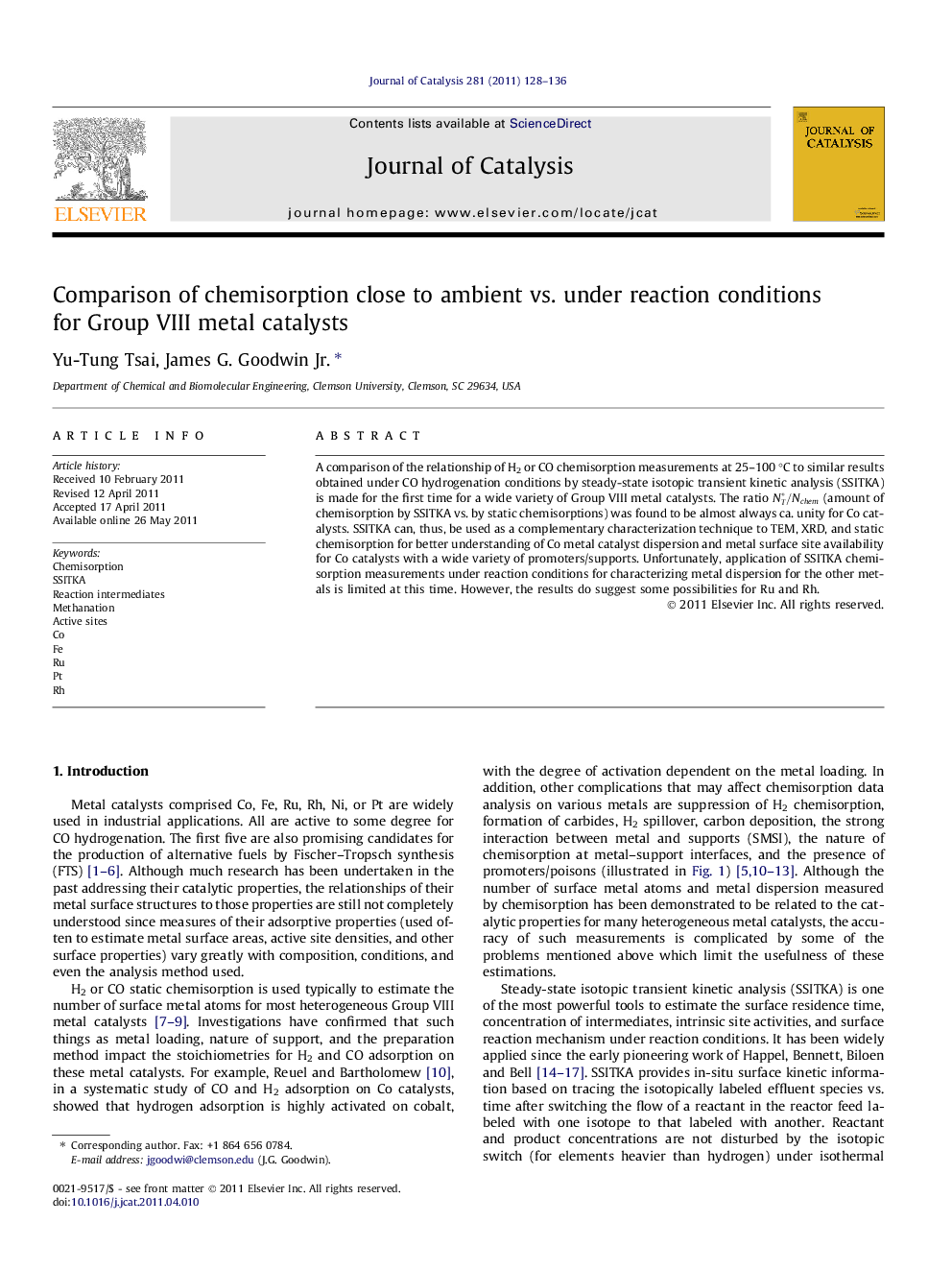| Article ID | Journal | Published Year | Pages | File Type |
|---|---|---|---|---|
| 61661 | Journal of Catalysis | 2011 | 9 Pages |
A comparison of the relationship of H2 or CO chemisorption measurements at 25–100 °C to similar results obtained under CO hydrogenation conditions by steady-state isotopic transient kinetic analysis (SSITKA) is made for the first time for a wide variety of Group VIII metal catalysts. The ratio NT∗/Nchem (amount of chemisorption by SSITKA vs. by static chemisorptions) was found to be almost always ca. unity for Co catalysts. SSITKA can, thus, be used as a complementary characterization technique to TEM, XRD, and static chemisorption for better understanding of Co metal catalyst dispersion and metal surface site availability for Co catalysts with a wide variety of promoters/supports. Unfortunately, application of SSITKA chemisorption measurements under reaction conditions for characterizing metal dispersion for the other metals is limited at this time. However, the results do suggest some possibilities for Ru and Rh.
Graphical abstractStatic chemisorption measured at low temperature may overestimate metal dispersion as a result of spillover or underestimate it due to slow kinetics of adsorption, strong metal–support effects (SMSI), and/or the presence of promoters or poisons.Figure optionsDownload full-size imageDownload high-quality image (59 K)Download as PowerPoint slideHighlights► RT and reaction T chemisorption for Group VIII metals (from SSITKA) are compared. ► RT chemisorption is not always best for determining exposed surface metal atoms. ► Reaction T chemisorption may provide more accurate results for characterization. ► Chemisorption on Co catalysts under reaction conditions measures metal dispersion. ► Ru and Rh may also offer possibilities for using chemisorption during reaction.
